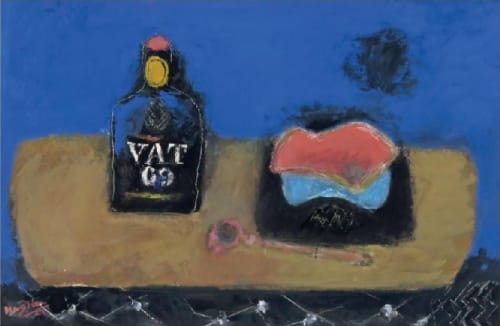Born in Poland in 1883, Hayden studied engineering in Warsaw before dedicating his life to art. In 1907 he moved to Paris, then the hub of the art world, and made France his permanent home.
He held his first one-man exhibition in 1911 at Galerie Druet, and exhibited a large painting at the Salon des Independants in 1914 and was soon to be recognized as a School of Paris painter, whose early interest in Cézanne developed into a firm commitment to Cubism.
Hayden’s Cubist period lasted from 1916 to 1921, during which time the sculptor Jacques Lipchitz introduced him to Juan Gris and the two painters became good friends. Gris introduced Hayden to Léonce Rosenberg who gave him a contract. He also became friends with Metzinger, Severini and Picasso.
After 1921 a more pronounced and fluid figuration emerged in his work. He was a great experimenter, and although he painted mostly landscape and still-life, he also ventured into figure compositions and portraits. Later in life, and particularly after 1960, he strove to simplify his forms and structures. His popular success did not preclude museum status. In France he was widely feted, and the Tate owns two paintings, a still-life and a landscape, and more than a dozen lithographs.
The critic Eric Newton identified Hayden’s ‘purely personal mood’ of ‘innocent lyricism’ which he saw leading directly to the experiments in colour of Rothko and Heron.

